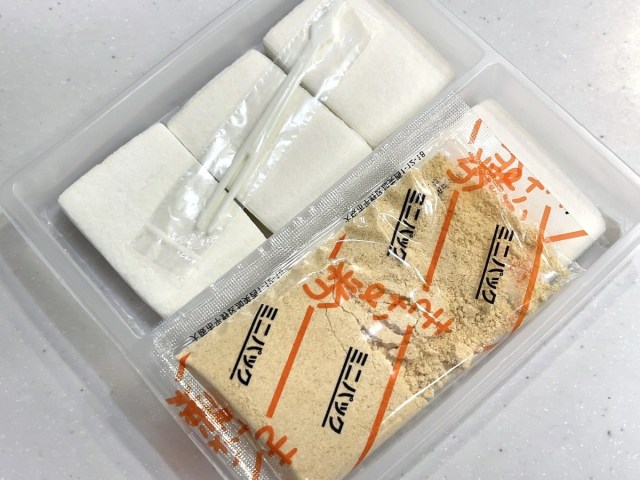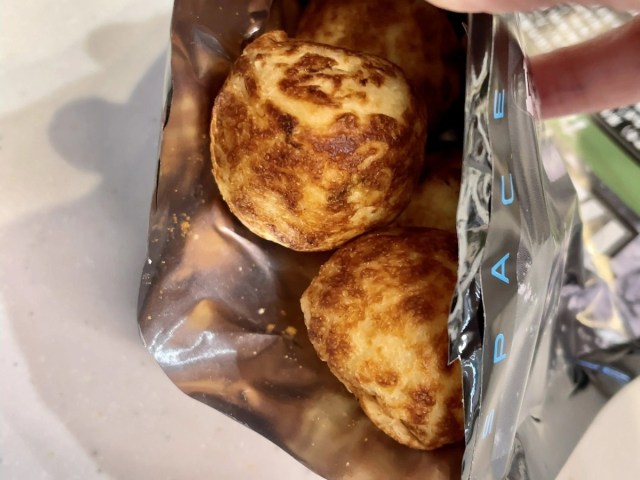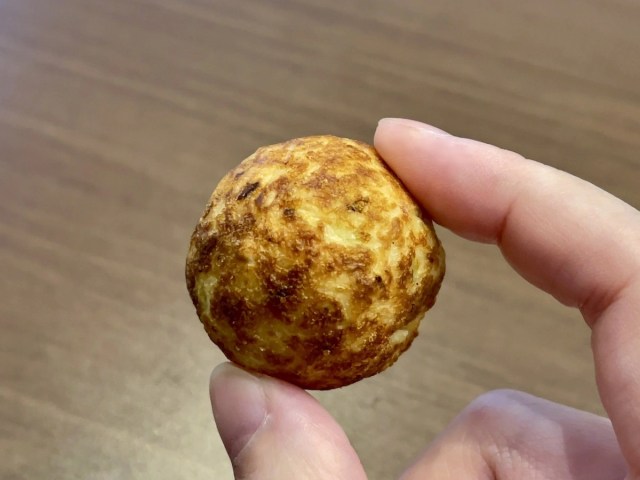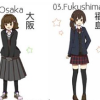
Take your taste buds on an intergalactic trip with these space-friendly foods!
October 4th marked the start of World Space Week, which commemorates the launch of the first human-made artificial Earth satellite, Sputnik 1. And while Sputnik was a Russian creation, these days astronauts from all over make journeys into space, including many Japanese astronauts.
Spending time floating in a zero-gravity environment miles above the planet sounds cool enough, but there are sure to be a lot of things astronauts miss about being on Earth, like, in particular, food from their home country. Understandably, space-safe food has a number of limitations and restrictions, since it needs to stay preserved on its way out into orbit and also be in a form that allows it to be safely eaten in the precision environment of a spacecraft or station. In keeping with such restrictions, space food consists mostly of freeze-dried products, so it might be hard to imagine a situation where you’d enjoy food designed to be eaten in outer space.
But we recently got our hands on some Japanese space food, and we have to say we were pretty keen to try it out.
As of 2022, there are currently 50 products that the Japan Aerospace Exploration Agency (JAXA) have certified as ‘Japanese Space Food’. Some of these products are available for the public to buy and try, like this space rice ball or a can of space mackerel. This time, we decided to try out four other products marketed as ‘space friendly’ and see how they tasted.
First off, we decided to try out some space mochi, rendered as ‘rice cake’ on the packaging.
The package included six thin slices of mochi rice cake, some kinako (soybean flour) and a tray to put water in. It also came with a fork to eat your mochi with.
In its current state it looks like some polystyrene packaging, and not particularly appetising.
But once the mochi square is dipped into some water on the tray, it absorbs the water and turns into…
… a pretty normal looking piece of mochi! It’s the perfect mix of chewy and sticky; in fact it’s so sticky that if you put several pieces together, they become one. And yet, it isn’t too soggy. It’s just like real mochi!
It was just as good as any mochi you’d buy in a supermarket, and our taste tester Saya Togashi would even consider keeping some at home for snacks.
But while this tasted like real mochi, and any Japanese astronauts on the International Space Station would never get homesick for Japanese food if they had this, Saya couldn’t help but spot some problems. Water has to be used differently in space because of the lack of gravity, so it would be pretty tricky to just pour water straight onto the mochi tray.
Also, the kinako flour would pose a problem in space, as any flour that floated away could clog air vents, contaminate equipment or get stuck in an astronaut’s eyes, mouth or nose. Saya assumed that the astronauts in space would prepare this in a different way to avoid any kinako flour mishaps from happening.
But still, it was a pretty tasty product, and Saya was looking forward to her next space meal, which was one of Osaka’s favorite regional specialties, takoyaki.
The packaging has a disclaimer that this takoyaki isn’t actually space-certified, but is made using the same production method as the takoyaki that are actually sent to space.
At a first glance, this didn’t really strike Saya as a real takoyaki ball; rather, some sort of takoyaki-flavoured snack puff.
But after taking a bite, Saya could taste the flavours like octopus, spring onion, ginger, and so on that make up a real takoyaki ball. This wasn’t just a takoyaki flavoured snack — this was a real takoyaki!
The texture was slightly different to a real takoyaki ball, though. It was freeze-dried, which meant it was more crunchier, but it was very satisfying.
Next up Saya tried some cans of yakitori, which are eaten in space and certified by JAXA. The cans come in two flavours — yuzu kosho (a spicy citrus flavour) and barbecue sauce. Both cans can be eaten as is, or heated up (which in space is done using an onboard food warmer).
The can is easily opened with a pull tab, and the second it’s opened you’re immediately met with a pleasant aroma.
Sure, the bite-sized pieces of chicken in jelly may not look the most visually appealing, but they were surprisingly tasty. The jellied portion has a strong citrus-y flavour and it tastes good even when it’s chilled!
The chicken had a slightly chewy consistency, which makes sense, as in space it’s more difficult to taste flavours and textures, so food with thicker textures with richer flavours are common.
Last on our list of space foods to try was a packet of yokan, a Japanese dessert made from red bean paste, agar and sugar, with chunks of chestnut spread throughout. Yokan may just be the perfect treat to take with you into space — it doesn’t need to be kept in a refrigerator, it doesn’t need any water and it’s satisfyingly filling. Also, it’s tasty and sweet, so it’s an ideal space food!
The packaging was identical to what gets sent to space for astronauts to enjoy, designed so it won’t accidentally burst open in the space station before astronauts open it using scissors.
The yokan was identical to a regular yokan you’d find in a supermarket — there was nothing particularly ‘not of this earth’ about how it looked.
In summary, all of these space foods were much tastier than expected. Saya had often imagined the worst thing about being stuck in space would be the lack of any comfort foods from home, but every single one of the products she tried were absolutely delicious, and she particularly liked the mochi.
The products in our space meal are available from JAXA-related facilities and science museums across Japan, as well as online here. If you fancy taking your taste buds on a trip to outer space, give this space food a try.
Related: Space Centre Museum Shop
Photos ©SoraNews24
● Want to hear about SoraNews24’s latest articles as soon as they’re published? Follow us on Facebook and Twitter!
[ Read in Japanese ]




















 Japanese Kaki No Tane snacks declared “space food” by JAXA
Japanese Kaki No Tane snacks declared “space food” by JAXA Space Onigiri: Do these long-lasting Japanese rice balls taste any good on planet Earth?
Space Onigiri: Do these long-lasting Japanese rice balls taste any good on planet Earth? We try a can of Space Mackerel, designed for eating on the ISS by high school students
We try a can of Space Mackerel, designed for eating on the ISS by high school students Convenience store fried chicken gets approved as food for Japanese space program
Convenience store fried chicken gets approved as food for Japanese space program Does the new Space Tea from Japan’s Village Vanguard actually taste like space?【Taste Test】
Does the new Space Tea from Japan’s Village Vanguard actually taste like space?【Taste Test】 Ramen restaurant’s English menu prices are nearly double its Japanese ones, denies discriminating
Ramen restaurant’s English menu prices are nearly double its Japanese ones, denies discriminating Dragon Quest Burgers and Slime drinks are coming to McDonald’s Japan【Video】
Dragon Quest Burgers and Slime drinks are coming to McDonald’s Japan【Video】 Japanese thug wear from Birth Japan perfect for those breaking bad next year
Japanese thug wear from Birth Japan perfect for those breaking bad next year What makes a good boss in Japan? Workers sound off in survey
What makes a good boss in Japan? Workers sound off in survey “Why, Japanese people!?” American dude has us rolling on the floor laughing with his comedic sketch
“Why, Japanese people!?” American dude has us rolling on the floor laughing with his comedic sketch New Japanese menstrual product seeks to help women spot unidentified iron deficiencies
New Japanese menstrual product seeks to help women spot unidentified iron deficiencies Japanese Twitter user illustrates the difference between schoolgirl uniforms in major cities
Japanese Twitter user illustrates the difference between schoolgirl uniforms in major cities Japan’s Top Twenty roadside service stops, destinations in their own right
Japan’s Top Twenty roadside service stops, destinations in their own right Gacha machine backpack is Japan’s hottest new fashion statement
Gacha machine backpack is Japan’s hottest new fashion statement Beautiful Starbucks in Kyoto blends into its traditional landscape in more ways than one
Beautiful Starbucks in Kyoto blends into its traditional landscape in more ways than one Japanese beef bowl chain Sukiya’s 2026 Smile Box lucky bag basically pays for itself
Japanese beef bowl chain Sukiya’s 2026 Smile Box lucky bag basically pays for itself Starbucks Japan ready to get Year of the Horse started with adorable drinkware and plushies【Pics】
Starbucks Japan ready to get Year of the Horse started with adorable drinkware and plushies【Pics】 Hayao Miyazaki says Happy New Year to Studio Ghibli fans with new art for Year of the Horse
Hayao Miyazaki says Happy New Year to Studio Ghibli fans with new art for Year of the Horse Cup Noodle tries an authentic Jiro-style ramen, but something’s not quite right
Cup Noodle tries an authentic Jiro-style ramen, but something’s not quite right Top Japanese cosplayer Enako returns to Comiket after 6 years, creates mayhem with admirers
Top Japanese cosplayer Enako returns to Comiket after 6 years, creates mayhem with admirers The best Starbucks Japan Frappuccinos we want to drink again in 2026
The best Starbucks Japan Frappuccinos we want to drink again in 2026 We revisited Sweets Paradise after a decade to see if Japan’s dessert buffet still delivers
We revisited Sweets Paradise after a decade to see if Japan’s dessert buffet still delivers That time Seiji called JASRAC to ask why he didn’t get paid royalties for his song being on TV
That time Seiji called JASRAC to ask why he didn’t get paid royalties for his song being on TV Pizza Hut Japan’s hot lucky bags are perfect for a New Year’s pizza party
Pizza Hut Japan’s hot lucky bags are perfect for a New Year’s pizza party Majority of Japanese mayors say foreign residents are essential but most see good and bad effects
Majority of Japanese mayors say foreign residents are essential but most see good and bad effects 7-Eleven Japan starts new temporary luggage storage service in over 300 branches
7-Eleven Japan starts new temporary luggage storage service in over 300 branches Disillusionment at Tsukiji’s tourist-target prices led us to a great ramen restaurant in Tokyo
Disillusionment at Tsukiji’s tourist-target prices led us to a great ramen restaurant in Tokyo Starbucks teams up with 166-year-old Kyoto doll maker for Year of the Horse decorations【Photos】
Starbucks teams up with 166-year-old Kyoto doll maker for Year of the Horse decorations【Photos】 Tokyo considering law requiring more trash cans following litter increase in heavily touristed area
Tokyo considering law requiring more trash cans following litter increase in heavily touristed area Tokyo’s Tsukiji sushi neighborhood asks tour groups to stay away for the rest of the month
Tokyo’s Tsukiji sushi neighborhood asks tour groups to stay away for the rest of the month Tokyo event lets you travel back in time, for free, to celebrate 100 years since Showa era start
Tokyo event lets you travel back in time, for free, to celebrate 100 years since Showa era start Japan may add Japanese language proficiency, lifestyle classes to permanent foreign resident requirements
Japan may add Japanese language proficiency, lifestyle classes to permanent foreign resident requirements Sanrio theme park in Japan announces plans to expand into a Sanrio resort
Sanrio theme park in Japan announces plans to expand into a Sanrio resort Lacquerware supplier to emperor of Japan and Pokémon team up for new tableware
Lacquerware supplier to emperor of Japan and Pokémon team up for new tableware Survey asks foreign tourists what bothered them in Japan, more than half gave same answer
Survey asks foreign tourists what bothered them in Japan, more than half gave same answer Japan’s human washing machines will go on sale to general public, demos to be held in Tokyo
Japan’s human washing machines will go on sale to general public, demos to be held in Tokyo Japan’s deadliest food claims more victims, but why do people keep eating it for New Year’s?
Japan’s deadliest food claims more victims, but why do people keep eating it for New Year’s? We deeply regret going into this tunnel on our walk in the mountains of Japan
We deeply regret going into this tunnel on our walk in the mountains of Japan Studio Ghibli releases Kodama forest spirits from Princess Mononoke to light up your home
Studio Ghibli releases Kodama forest spirits from Princess Mononoke to light up your home Major Japanese hotel chain says reservations via overseas booking sites may not be valid
Major Japanese hotel chain says reservations via overseas booking sites may not be valid Put sesame oil in your coffee? Japanese maker says it’s the best way to start your day【Taste test】
Put sesame oil in your coffee? Japanese maker says it’s the best way to start your day【Taste test】 No more using real katana for tourism activities, Japan’s National Police Agency says
No more using real katana for tourism activities, Japan’s National Police Agency says Starbucks Japan reveals new sakura drinkware collection, inspired by evening cherry blossoms
Starbucks Japan reveals new sakura drinkware collection, inspired by evening cherry blossoms Updated cherry blossom forecast shows extra-long sakura season for Japan this year
Updated cherry blossom forecast shows extra-long sakura season for Japan this year We spice up our fermented soybeans with curry powder flavored natto【Taste Test】
We spice up our fermented soybeans with curry powder flavored natto【Taste Test】 We fry up a feast at Kushiya Monogatari and learn the joy of Japanese skewer restaurants
We fry up a feast at Kushiya Monogatari and learn the joy of Japanese skewer restaurants Japan’s new “Takoyaki? Burger” reimagines takoyaki for the fast food world
Japan’s new “Takoyaki? Burger” reimagines takoyaki for the fast food world Osaka Lover Takoyaki Danish Bread is this week’s weird Japanese must-try food
Osaka Lover Takoyaki Danish Bread is this week’s weird Japanese must-try food ‘Butter mochi’ flavoured chocolate may be the best kind of Tirol we’ve ever tasted
‘Butter mochi’ flavoured chocolate may be the best kind of Tirol we’ve ever tasted Green takoyaki puts a new spin on classic Japanese street food
Green takoyaki puts a new spin on classic Japanese street food New Takoyaki Burger from Wendy’s Japan makes us rethink Osaka’s specialty food
New Takoyaki Burger from Wendy’s Japan makes us rethink Osaka’s specialty food Takoyaki…inarizushi? New fusion food boggles the mind in Japan
Takoyaki…inarizushi? New fusion food boggles the mind in Japan “Flat Takoyaki” at Nanpuu reimagines Japanese street food
“Flat Takoyaki” at Nanpuu reimagines Japanese street food We tried takoyaki-flavored toothpaste with surprising results【Taste test】
We tried takoyaki-flavored toothpaste with surprising results【Taste test】 We became Japanese sweet chefs for a day with Popin Cooking’s DIY wagashi set
We became Japanese sweet chefs for a day with Popin Cooking’s DIY wagashi set Our toughest blind taste test yet — can our writers pick out the more expensive mochi?
Our toughest blind taste test yet — can our writers pick out the more expensive mochi? Takoyaki ice cream appears at Japanese convenience store chain
Takoyaki ice cream appears at Japanese convenience store chain Okonomiyaki you can eat with one hand? We try a revolutionary new frozen food【Taste test】
Okonomiyaki you can eat with one hand? We try a revolutionary new frozen food【Taste test】 Iron flavoured traditional Japanese candy is a thing, and you bet we tried it
Iron flavoured traditional Japanese candy is a thing, and you bet we tried it We try the world’s first hot ruby chocolate drink at Japanese Kit Kat Chocolatory 【Taste Test】
We try the world’s first hot ruby chocolate drink at Japanese Kit Kat Chocolatory 【Taste Test】
Leave a Reply